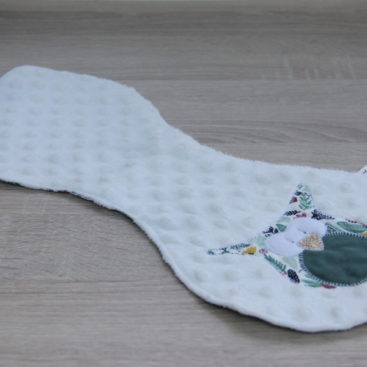The higher the retained earnings of a company, the stronger sign of its financial health. This indicates that a company does enough business to generate revenues that cover all expenses (and that expenses are managed efficiently), pay out dividends if the company does so, and still has money left over to invest back into itself. As a result, additional paid-in capital is the amount of equity available to fund growth. And since expansion typically leads https://1investing.in/what-is-quickbooks-and-how-does-it-work/ to higher profits and higher net income in the long-term, additional paid-in capital can have a positive impact on retained earnings, albeit an indirect impact. Retained earnings are left over profits after accounting for dividends and payouts to investors. If dividends are granted, they are generally given out after the company pays all of its other obligations, so retained earnings are what is left after expenses and distributions are paid.
5.10 There were concerns that there are too many ‘discretionary powers’ for scheme managers which may lead to inconsistencies across the locally administered schemes, with requests for the Home Office to provide guidance. The nature of the provisions these regulations are making, and the complexity of personal circumstances means that individual decisions will have to be made by scheme managers. 4.57 Section 14 of the PSPJOA provides that overpayments must be repaid to the scheme. However, the PSPJOA also provides that schemes may decide whether to waive all or part of any such liabilities owed to the scheme. HM Treasury Directions set out factors to be considered by the scheme when considering whether to waive or reduce any such liability by the member and that the principles set out in Managing Public Money should be followed.
What Affects Retained Earnings
It might also suggest that Company A prefers to reinvest its profits into the business to fuel growth rather than distributing dividends to shareholders. The retained earnings are calculated by adding net income to (or subtracting net losses from) the previous term’s retained earnings and then subtracting any net dividend(s) paid to the shareholders. On the other hand, when a company generates surplus income, a portion of the long-term shareholders may expect some regular income in the form of dividends as a reward for putting their money in the company. Traders who look for short-term gains may also prefer dividend payments that offer instant gains. Retained earnings are the cumulative net earnings or profits of a company after accounting for dividend payments. As an important concept in accounting, the word “retained” captures the fact that because those earnings were not paid out to shareholders as dividends, they were instead retained by the company.
- The retention ratio is the proportion of earnings kept back in the business as retained earnings.
- In this case, Company A paid out dividends worth $10,000, so we’ll subtract this amount from the total of Beginning Period Retained Earnings and Net Profit.
- A business’s calculated retained earnings are a crucial indicator of overall financial health.
- Shareholders profit when a company profits; they receive dividends and hold equity in the business.
- The same applies to employee contributions which were not paid in the legacy scheme and would have been paid in the reformed scheme (assuming someone in this position actually opts for reformed scheme benefits).
- The figure is calculated at the end of each accounting period (monthly/quarterly/annually).
Since revenue is the income earned by a company, it is the income generated before the cost of goods sold (COGS), operating expenses, capital costs, and taxes are deducted. Finally, calculate the amount of retained earnings for the period by adding net income and subtracting the amount of dividends paid out. The ending retained earnings balance is the amount posted to the retained earnings on the current Bookkeeping for Nonprofits Scope of Services Foundation Group® year’s balance sheet. If the company paid dividends to investors in the current year, then the amount of dividends paid should be deducted from the total obtained from adding the starting retained earnings balance and net income. If the company did not pay out any dividends, the value should be indicated as $0. Let us assume that the company paid out $30,000 in dividends out of the net income.
More explanations about Intermediate Accounting
6.32 On the general issues, as noted in the summary at paragraphs 5.6 to 5.9, concerns about pension reform and related issues, and the language used in drafting of the regulations are not part of this consultation. 6.29 Some responses also suggested that ill-health cases that are due to be revisited under the McCloud remedy should be dealt with in accordance with section 61 of the Equality Act 2010. The proposals in the consultation paper indicate that some of these cases may take time to conclude – this will deny them to the correct pension entitlement that they are entitled to receive now. 6.7 On the general issues, as noted in the summary at paragraphs 5.6 to 5.9, concerns about pension reform and related issues, and the language used in drafting are not part of this consultation. 6.3 Other responses noted that they were concerned about the exclusion of scheme members who joined a legacy scheme between April 2012 and March 2015 and did not feel that adequate justification for this approach had been provided.
At such a stage in the business cycle, it would be expected to see a lower RORE and higher dividend payout. A shareholder can be satisfied by a small 1% dividend like ABC, Inc. has historically paid, as long as there are still gains on the shares. In a market where a bondholder may only yield a 5% return, the 1% dividend coupled with the 15% return on retained earnings that produced a 50% increase in EPS over five years is more attractive.
What Are Retained Earnings?
This is the amount of income left in the company after dividends are paid and are often reinvested into the company or paid out to stockholders. This represents capital that the company has made in income during its history and chose to hold onto rather than paying out dividends. Finally, the dividends or drawings paid to owners can also be found in either the balance sheet or the statement of retained earnings of a business.
Shareholder equity represents the amount left over for shareholders if a company paid off all of its liabilities. To see how retained earnings impact shareholders’ equity, let’s look at an example. Since net income is added to retained earnings each period, retained earnings directly affect shareholders’ equity.
Remedy Period and Remediable Service
A business is taxed based on its net income, and retained earnings are what remains after net income is taxed. Retained earnings are not the taxed portion because tax has already been deducted from this total. Further, figuring your retained earnings helps your company work out cash projections and draw up a budget for the year ahead, which will also be necessary to shareholders. The higher the figure, the better the company is using its assets to create a profit.












